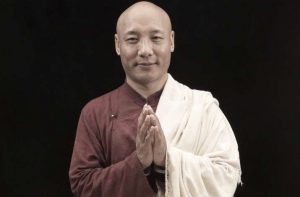
It’s not intended to be ironic that you are reading this on a screen. I am more comfortable with the printed book metaphor because I am of a certain age and publish Buddhist books.
On the radio recently, I heard the director of the movie Don’t Look Up (2021) speaking about how the environmental crisis has influenced artists. He too used the phrase “turned the page” regarding our consensus on the reality of our wicked problem, and about how we are shifting more to presenting solutions rather than diagnosing issues.
Looking at the constellation of Dharma books out there, I’m energized by the ever-increasing Buddhist contributions to the issues of our day. That’s where the suffering is, that’s where it takes form, and that’s where our field for practice lies.
Labeling is a bit counter-intuitive for Buddhists seeking to move beyond labels, but hear me out. After all, wasn’t Shakyamuni Buddha famously cited as saying there are 84,000 Dharma doors?
I see a messy amalgam of categories here:
• Scholarly
• Visionary
• Liturgical
• Pragmatic
• Engaged
• Historical
• Secular
• Psychological
• Philosophical
• Personal
• Hero(ine) Quest
• Counter-intuitive
Within each dimension, the books I’ve seen range from electrifying to stultifying; from eye-opening to reiterating clichés in tired frames of reference. Depending on whom each author knows, the message might circulate through metaphorical mycorrhizal networks, blooming in vastly different places, assuming those other folks choose to boost awareness in their own networks, giving the work more life. It’s more dynamic than a Venn diagram.
Asia has a rich literary heritage, as can be seen by the vast libraries in Buddhist monasteries of yore. Alas, book culture has waned in the face of the global industrial-strength post-modern digitization of communications. We have grown up digital and are hooked on smart screens. It’s very hard to discern the signal amid the noise.
Like some CGI special effects from Dr. Strange (2016), could we imagine Buddhist books today as orbiting around some interdimensional sweet spot where their respective gravitational forces hold each other in a tensegrity mandala? Let’s try. We’re definitely going to have to think in 3D. In fact, since this is evolving in real time, we’re going to have to imagine it as a pulsating ball of energy. I’ve got just the music for that!

On the wall in front of my treadmill these days is a picture of His Holiness the Dalai Lama holding a copy of This Fragile Planet: His Holiness the Dalai Lama on Environment (Sumeru 2021), which I had the blessing to publish last year. I have a picture of His Holiness sweating it out on his treadmill too, on my computer screen, and look at it from time to time. But it would be a bit too meta to put it on the wall in front of me while I walk a mile in my own running shoes.
Of late, I have been listening to Terry Riley’s musical masterpiece A Rainbow in Curved Air as I walk. I first heard it in 1969, introduced to it by a musical Finnish friend. One of my sons says whoever wrote it must have been on an acid trip. I hear it as the ever-changing and irresistibly hypnotic molecular energy of our mandala. Have a listen. I guarantee your workout playlist will be forever altered.
So much of our paper culture is ephemera. There’s a fine line between books, poster art in the public sphere, and graffiti. Authors and street artists alike are swept up into the celebrity machine of mass culture. But imagine if we described all scriveners and toilers in the garrets of Buddhist publishing with the breathless enthusiasm and insistence on their importance as we lavish on the latest Olympic athlete? Well, that would certainly be a different world.
Does the galaxy of Buddhists recording words and experiences in some fixed form embrace the notion of some heavy hitters from the A-list, and then a bunch of farm team wannabes? Maybe, but it certainly isn’t a dominant theme. And that’s where I think we’ve turned another page but may not realize it.
Recently, I had a series of difficult conversations with a prospective Sumeru author who shall remain nameless. That author had self-published several books but was not achieving the breakthrough to which they aspired. In reviewing the material, I could see several areas for dramatic improvement, not just in terms of copy-editing or structural modifications but in terms of serious substantive editing. The books aspired to excellence in one genre but were written as if aspiring to excellence in another—for example, a popularization claiming scientific methodology while including no evidence, data or modeling, and all the while purporting to be a scholarly text. Buddhist books can no longer merely repeat vague time-worn tropes and memes.
Another glitch in the matrix I see is a failure to recognize that books exist within this larger context. Publishing programs are a higher order of organizational thinking because so much of Buddhist publishing is integrated with organizational development goals and community-based leadership—themselves spinning galaxies of cognitive and affective energies. This is not a widget business. Just because we abandon the notion of being all things to all people all the time does not mean that we aren’t actively pumping our juice into our mycorrhizal networks with all the vibrant kundalini energy we can muster 24/7. Each touchpoint we have with a book is magical.
Whenever I’m able to chat with publishers at other small presses, it’s a thrill. I used to gain the same kind of nourishment when I attended the monthly meetings of the Toronto Typographic Association back in the 1980s. So let’s hear it for community, please. Buddhist publishing—indeed all small-press artisanal publishing—works better when it is collaborative rather than competitive.
The renunciation of mass-market success also has its pitfalls. Segmented markets tend to turn into echo chambers. Silo mentality puts up barriers to communication with others and to interdisciplinary understanding of aspirations, challenges, and paths. I certainly don’t want to be constricted to only seeing things from my particular vantage point. Nor do I want to be seen as a bit player in an opera where the leads have international followers and mega-followings on Instagram, while the rest of the cast and crew are taken for granted.
I may not be bitter, but I did write a sharp letter the other day to the host of the above-mentioned radio show about the arts in Canada, chiding the team for their longstanding snub of book culture, resorting instead to lazy journalism shilling for movie stars with giant studio blockbusters on the upcoming-release media circuit. No reply expected, but they say they read every email.
I can’t tell you about the exact criteria for success in any literary genre, but I know what I like: authentic authors with constructive contributions to public discourse, with a good grasp of how to tell an engaging story that is well-organized, for whom a book is not the be all and end all of their evolution. In Buddhist books, I like those that bring the Dharma’s timeless wisdom to modern suffering. That means authors who are hearing the sounds of the world, unlike one bhikkhu who proudly told me recently on multiple meetings that he listens to no TV or radio, reads no non-Dhamma books, magazines, or newspapers, and limits his internet activity to minimal involvement.
It’s not too much of a stretch for people to understand that there are different types of writing. A peer-reviewed medical study is not the same as a business plan, a PhD thesis, a hymn, or a mystery novel. We manage to shift cognitive gears without too much grinding, although some forms present more of an uphill climb.
Why is it challenging to apply the same openness and fluidity to different Buddhist lineages and traditions? Ranking them hierarchically seems self-defeating yet all too common. I appreciate many types of music and return to certain genres over and over. That doesn’t make me a bad person. Indeed, some would have me believe that listening to music is, in and of itself, a downfall. Not company I care to keep.
There is serendipity in what we decide to read from among the maelstrom of possibilities available to us at the push of a virtual button. We are driven by intentions and dependent arising within our social and physical locations. I’m told that the quantity of Harlequin romance novels now published could reach to the Moon several times over. So, let’s be realistic; Buddhist publishing is a niche, with the largest publishers comprising staff levels of fewer than 50. Small Buddhist presses like mine are a niche within a niche.
I recently made the acquaintance of an Indigenous writer, Dan Lockhart of Urban Farmhouse Press, a small press located in Windsor, Ontario. Dan told me that when he lived in the US, he visited the local Tibetan Buddhist temple weekly because it felt closest to home for him spiritually. He went on to tell me many Indigenous folks have great respect for Buddhism, finding it quite congruent with their spiritual system. I shared with him a recent BDG article about Buddhist allies in Indigenous Interfaith dialogue.* We’re now looking forward to stirring up some small press good trouble together.
I also recently heard back from William Edelglass at the Barre Center for Buddhist Studies about the invitation I had sent him two years ago to participate in an environmental audit of rural Buddhist centers in North America. He had filed the email as an important one to respond to, and then the events of the pandemic overtook us all. He referred me on to an urban-planning professional who had done her undergraduate thesis on that very topic and thought that I should connect with her. She works in LEED environmental certification for buildings in Chicago.
Just the sort of person I want to meet! So I did, and we had a long conversation about expanding on her work and turning it into a book. As I may have mentioned in an earlier article for this column when enthusing about this project, I have promises of a strategic partnership with Esri, a company that makes GIS mapping software. So in addition to laying out the philosophical and ethical foundations of Buddhist environmental policy, combined with 10–15 examples of regenerative design, we have the opportunity to gather and analyze environmental data from 108 rural Canadian and US Buddhist centers, perhaps even with interactive maps. Based on our subsequent correspondence, she seems keen to participate in the project.
Stay tuned for the next chapter as you turn the page!
See more
Urban Farmhouse Press
Barre Center for Buddhist Studies
Esri
Related features from BDG
For the Earth: Buddhist Environmental Thought and Activism
Global Systemic Crisis and Buddhism: Toward a Change of Paradigm
Earth in Crisis: What Is Our Calling?
Book Review: Lama Shenpen Hookham’s Keeping the Dalai Lama Waiting & Other Stories
A Short History of the Buddhist Publication Society













I appreciate what you say and how you say it.